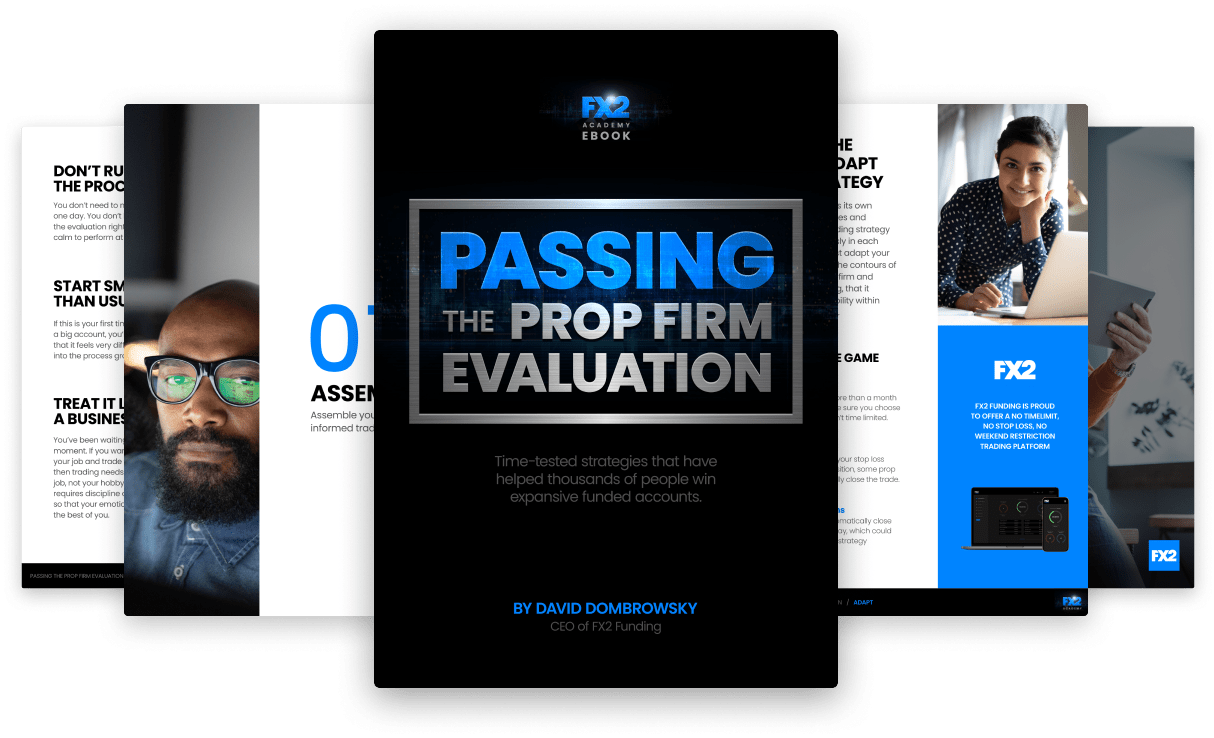Read about trading exotic currencies: what are the pros and cons? Check out the most volatile exotic currency pairs from our experts on the Index Fundings Blog.
Cryptocurrencies are an emerging asset class shaping activities in the investment world. Their adoption as legal tenders in some countries affirms they are no longer fads but asset classes likely to stick around. Moreover, the high liquidity and volatility of some digital currencies make them a perfect investment asset class in the financial markets.
Trading cryptocurrencies offers an opportunity to divest an investment portfolio. Therefore, in addition to trading currencies, stocks, and commodities, the emerging asset class provides a chance to bet on the underlying blockchain technology that significantly impacts the global economy.
There are two ways to trade cryptocurrencies:
It is primarily done in cryptocurrency exchanges, whereby people buy some tokens for the underlying cryptocurrency. The tokens allocated and delivered for storage depend on the amount of money spent in the crypto exchange.
The token is then stored in cryptocurrency wallets built on the exchange or third-party wallets installed in a computer. This mode of investing in cryptocurrencies allows investors to bet on the long-term prospects of the underlying project. It is also mostly done when someone expects the token's value to increase significantly in the long haul.
Purchasing cryptocurrencies outright also offers the opportunity to stake or lock part of the tokens in the ecosystem to help provide liquidity and secure the network. By staking, token holders are usually entitled to part of the fees generated in the network.
Contracts for Difference (CFDs) are derivative products that allow traders to speculate on the underlying cryptocurrency prices. In this case, people don't end up owning cryptocurrencies. Instead, they can bet on whether the prices will increase or decrease. Given that there is no delivery, there is no need for cryptocurrency wallets.
Trading cryptocurrencies through CFDs occurs in brokerage accounts and not in cryptocurrency exchanges. Additionally, the CFDs contract has no expiry date and can be opened and closed anytime.
Unlike buying cryptocurrencies outright in exchanges, CFDs allow traders to speculate on cryptocurrency prices increasing and decreasing.
The first step to trading cryptocurrencies with CFDs entails opening an account with a brokerage firm. Once an account is verified, you should be able to deposit the minimum amount required by the broker to be able to trade. Once everything is set up, you can speculate cryptocurrency pairs using CFDs.
While trading cryptocurrency CFDs is all about buying and selling, knowing when to buy and when to sell is vital. For instance, BTCUSD is one of the market's most traded crypto CFDs. When the price of Bitcoin increases, it means Bitcoin (BTC) is strengthening against the dollar due to various factors. In this case, a trader will look to open a Buy or long position in the brokerage account to profit from the prices of Bitcoin increasing over time.
Source: Flowbank.com
While going long in CFD trading, the position's value increases with an increase in the price of the underlying cryptocurrency pair. Therefore, it is essential to buy low and sell high.
Once the price of BTCUSD increases from $17,500 to $19,200, the underlying profit in the CFD contract will be $1700 per contract, depending on the lots bought. The profit is the difference between the price level at which the CFD buy position was opened and the final position at which the price was closed.
Similarly, whenever the price of BTCUSD is decreasing, it means the dollar is strengthening, or there is negative news about BTC that has scared traders, fueling the sell-off. In this case, a trader would look to open a sell position in the brokerage account to profit from the prices of bitcoin declining.
Source: Flowbank.com
While going short, the idea is to sell high and buy low to make a significant profit from the CFD position.
Therefore, if the coin was trading at $17,500 and a trader opened a short or sell position, they would make a $1500 profit per CFD contract on the BTCUSD, tanking to $16,000. The profit is calculated as the difference between the level at which the short or sell position was opened and the level at which the CFD contract was closed.
One key advantage of trading cryptocurrency CFDs is that you only need to deposit a small amount into a brokerage account. In return, the broker will provide leverage or a loan that magnifies the amount of money deposited, allowing you to trade a much bigger position than what the initial capital could handle.
For instance, if you deposit $100 and use a 100:1 leverage, you could open positions worth $100,000. In this case, it becomes much easier to magnify profits. Nevertheless, leverage is a double-edged sword. Therefore, as profits get magnified, so will losses at the same rate.
While trading CFDs and looking to make profits, traders conduct two types of analysis to determine whether cryptocurrency prices will increase or decrease.
Fundamental analysis is an analysis of news and events affecting cryptocurrency projects. Any positive information will always fuel demand for the cryptocurrency, arousing a buying spree in the market. Similarly, any negative news will evoke fear and concern, forcing investors to sell the coin.
Government regulation is one aspect that affects cryptocurrency sentiments, fueling heightened volatility in the market. Introducing new tighter regulations, crackdowns, and bans often triggers fear causing traders to shun cryptocurrencies. The net effect is a strong selling spree in the market.
Problems at cryptocurrency exchanges, such as breaches and collapse, also tend to have a negative impact and are known to trigger sell-off waves. In this case, most crypto CFD traders use the opportunity to open sell positions in the market.
Likewise, new technology developments such as blockchain upgrades adoption or innovation tend to arouse investor interest, triggering buying sprees in the market. Consequently, CFD traders use this opportunity to open buy positions in anticipation of cryptocurrency prices increasing.
Technical analysis is another important evaluation that helps crypto CFD traders know in advance whether prices will increase or decrease. The technique involves using technical indicators and studying chart patterns to understand the direction price moves.
If the underlying trend is up and technical indicators hint at growing bullish momentum, traders use the opportunity to open a buy position while trading crypto CFDs. Similarly, suppose the underlying trend is down, and technical indicators hint at growing bearish momentum. In that case, traders use the opportunity to open sell positions using CFDs to try and profit from a decline in prices in the long term.
One of the most effective ways of trying to profit while speculating crypto prices using CFDs is trading in line with the underlying trend. In this case, positions in the brokerage account are opened in line with the underlying trend.
Moving Average is one of the most effective technical indicators that help traders know the direction in which prices are moving; therefore, open trades in that direction.
Source: Tradingview.com
For instance, if Bitcoin price is above the 50-day Moving Average in a price chart, a trader could look to open a buy position on pullbacks in anticipation of further increases. Conversely, any pullback close to the MA provides an opportunity to buy low.
Source: Tradingview.com
Similarly, it implies bearish momentum whenever the price is below the 50MA. Therefore, one can look to open short positions whenever the price bounces back close to the MA, offering an opportunity to sell high.
The strategy involves using two moving averages, one fast-moving and another slow-moving. Whenever a crossover occurs, it signals to either open a buy or sell position. For instance, one can use the 21MA as the fast-moving average and 50MA as the slow-moving average.
Consequently, whenever the 21MA crosses the 50MA and starts moving up, it acts as a buy signal implying prices are likely to increase. A trader can open a buy position using CFDs to profit from further price increases.
Source: Tradingview.com
Similarly, whenever the 21MA crosses the 50MA and moves lower, it implies a build-up in selling pressure. Consequently, a trader can use the opportunity to open a sell or short position in anticipation of prices dropping.
Source: Tradingview.com
Cryptocurrency prices, like any other asset, sometimes move in different directions. As a result, periods of trend reversal are a common occurrence providing an opportunity for traders to open trades just as a new trend is starting.
The Relative Strength Index is one effective indicator for trading trend reversals in the market. The indicator comes with readings between 0 and 100. Whenever the indicator reading is above 70, it implies the underlying cryptocurrency is bought too much.
The prospects of price reversing with RSI signaling overbought conditions are usually high, as very few people would be willing at the prevailing highs. In addition, the emergence of a bearish engulfing candlestick with the RSI reading above 70 often signals a trend reversal from bullish to bearish. Consequently, a trader can use the opportunity to open a short position.
Source: Tradingview.com
Similarly, whenever the RSI reading is below 30, it implies the underlying cryptocurrency is sold too much. The prospect of prices tanking further is usually low as smart traders exit the market to lock in profit. Therefore, the emergence of a bullish engulfing candlestick with the RSI signaling oversold implies a trend reversal.
A trader can use the opportunity to enter a long position; therefore, buy low as the price bottoms out and starts moving up.
CFDs are some of the most effective financial instruments that allow traders to speculate on cryptocurrency prices without buying the actual cryptocurrencies. They stand out in making it easy for traders to speculate on prices increasing by buying and decreasing by selling. Additionally, trading cryptocurrency through CFDs does not require a lot of money, as brokers provide leverage.

Read about trading exotic currencies: what are the pros and cons? Check out the most volatile exotic currency pairs from our experts on the Index Fundings Blog.
Do you know how to trade gold? Check out gold trading strategies and tips from our experts and find out the best indicator for gold trading on the Index Fundings Blog.
Check out WTI and Brent crude oil trading methods: how to trade oil futures, options, CfDs, and more. Read about spot oil market on the Index Fundings Blog.
What are order blocks in Forex and how to find them? Read about bullish and bearish order blocks and tips on how to include order blocks in your Forex trading strategy.
Read about Forex trading sessions and find out the best time for Forex trading on the Index Fundings Blog. Tokyo, London, and New York Forex market timings: when is the market most liquid?
